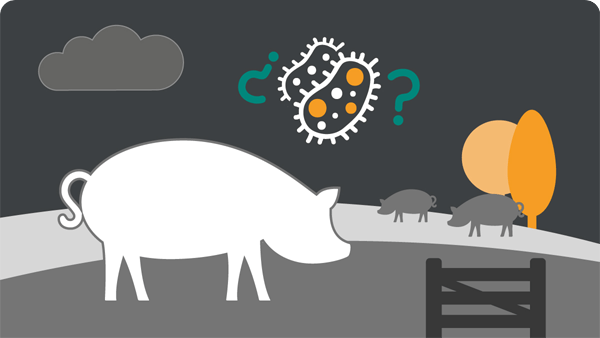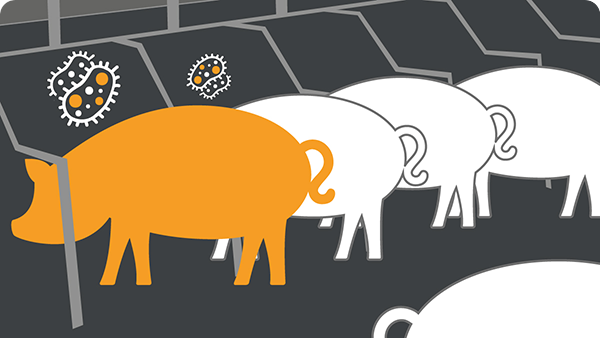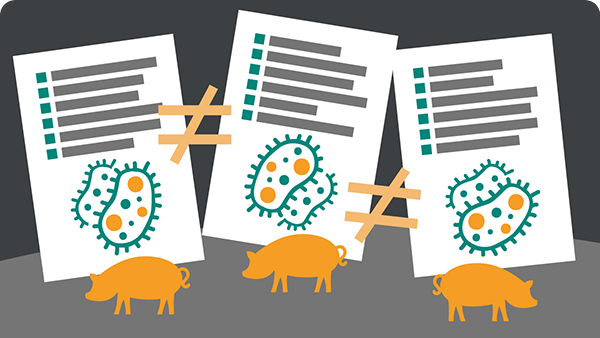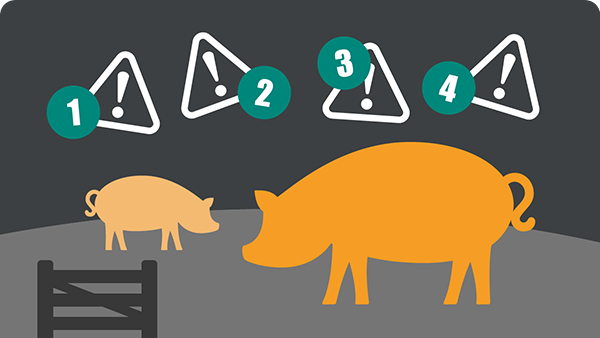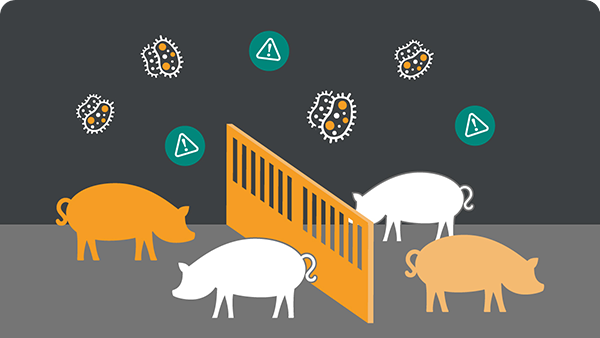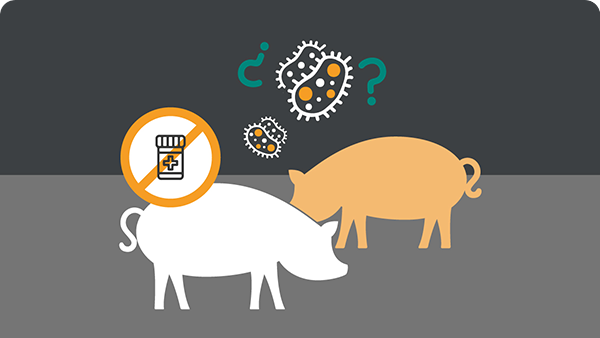
The disease
Treatment of ileitis

Treatment of ileitis
There are two distinct scenarios that have to be considered regarding a significant ileitis clinical presentation in a herd.
ACUTE FORM
The first scenario is when you are having an outbreak with significant clinical signs characterized by diarrhoea and mortality.
This situation is mostly observed in herds with the acute or haemorrhagic form of the disease. Once the diagnosis of the disease has been confirmed, based on clinical-pathological findings, an aggressive medication protocol must be implemented.

The Disease

L. intracellularis is a gram-negative rod with a sigmoid or curved shape and with a single long flagellum.

Contact us
2 Giralda Farms
Madison, NJ 07940 United States
animal-health-communications@merck.com



